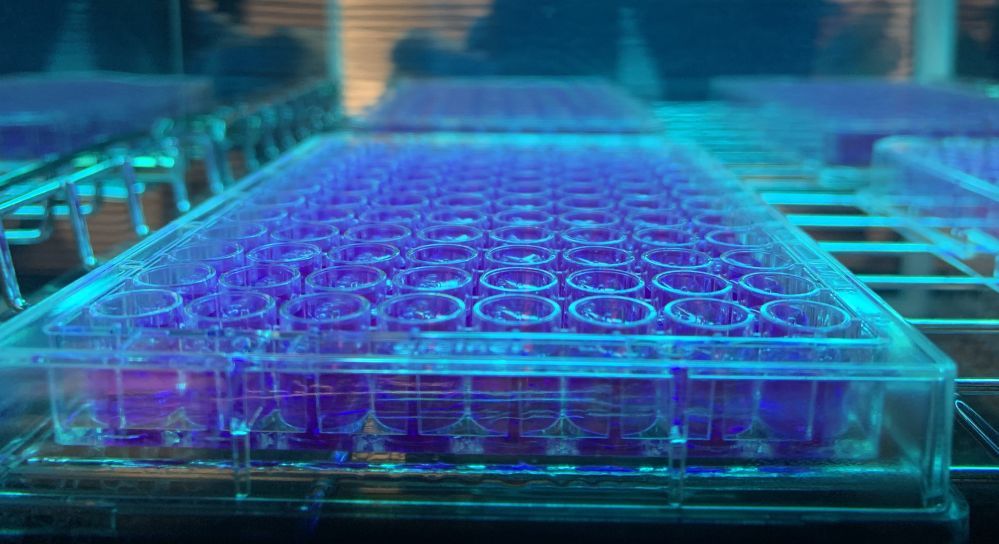What’s the key to cutting the cost of cell culture media for cultivated meat?
Finding more efficient ways to produce pricey inputs such as growth factors (proteins that encourage cells to grow and differentiate) at scale will be critical, whether that’s via genetically engineered microbes, plants, or fruit flies. But that’s only part of the challenge, says London-based startup Multus Biotechnology.
“What holds back media development is the inefficiency of optimization, so that’s across cost; ingredient quality, potency, stability and sustainability; scalability; and bioprocess productivity [proliferation rate, cell density, differentiation efficiency etc],” Multus Bio head of business development Dr. Charlie Taylor tells AgFunderNews.
“Optimizing across objectives across all of these areas at the same time is the real challenge facing companies in this space. It’s not just a case of how do we make growth factors cheaper?”
And when it comes to optimizing media formulations, he says, “Smarter decision-making, more data, and doing more in parallel equals better results, faster. Coupled to cheaper inputs and scale economies, that’s the roadmap to low-cost media across the metabolic panoply of cultivated meat cell lines.”
By combining AI and automation, you can address two key choke points in optimal media formulation, claims Taylor: “underpowered decision-making tools [for example what amino acid to change in a protein or what protein to change in a formulation]; and underpowered experimentation throughput.”
Serum-free cell culture media development
Founded by four students at Imperial College London (Cai Linton, Kevin Pan, Réka Trón, and Brandon Ma), Multus Bio is working with multiple cultivated meat companies on serum-free media development, and using its AI-powered approach to develop more potent and effective growth factors.
According to Taylor: “Multus has three offerings. One is off-the-shelf products, both mixes of ingredients and individual proteins. Two, we do media development for customers. And three, we do manufacturing of serum-free alternatives to FBS (fetal bovine serum), so the capacity we’re building [at a new pilot plant in Acton, London] is the world’s first food grade production facility for a serum alternative.
“We’re building a pilot scale facility with the capacity to produce enough serum-free FBS alternative for about 200,000 liters of complete media per month. So that’s enough for a fairly sizable cultivated meat facility. It’s currently being equipped with operations scheduled to begin during Q4 2023.”
Combining data science with high-throughput experimentation
He added: “Our USP is about combining data science with high-throughput experimentation to figure out the right formulations to use.”
In practical terms, he argued, running all the experiments you would need to do to figure out a formulation that is optimal for your cell lines, is “practically impossible. Let’s say you’ve got 30 ingredients and you want to know the right concentration of each to make your cells grow optimally? If you looked at every possible combination, that’s millions of experiments using conventional approaches.”
At Multus Bio, he said, “we’re not using what’s called Design of Experiments. We’re using a type of machine learning called Bayesian optimization, statistical tools used for the automatic optimization of decisions about ad spend on social media platforms by constantly learning from data about where to spend the next dollar.
“We’ve built a version of that for the optimization of experiments to explore different media formulations for cells. But we’ve also bought lab equipment and automation tools and written software to knit together those pieces of equipment with the decision-making engine run with the machine learning application we’ve created.
“So we set up the experiments, put the cells into the trays, but beyond that, it’s a fairly autonomous experimentation platform. It’s not relying on a scientist to come in and decide what to do.”
Traditionally, he said, scientists would “do some experiments with cells, then stain them in order to look at them under a microscope. We’re taking photographs under a microscope, and then using image processing software we’ve developed.
“So rather than letting cells grow for two or three days and then doing some staining and taking a photograph, we take photographs every two or three hours because a robotic arm is taking trays of cells out of the incubator, putting them under the microscope and taking a picture.”
Image processing
Image processing allows Multus Bio to look at growth rates, but also morphology, he explained. “Cell biologists often say, do my cells look happy, based on their shapes? And so when we train models for whatever cells we’re working with, we’ll train them on the right morphology so we can see how happy the cells are as well as their growth.”
And because this process happens every two or three hours, the decision-making engine running the experiments can make better decisions about what to do next, he said.
“Ultimately, it means we’re able to make experimental progress more quickly and we can solve for quite complex objectives. So for example, make it cheaper but improve my growth rate at the same time, while moving from pharma-grade ingredients to food-grade ingredients. And by the way, try using these complex plant-based ingredients rather than just the chemically defined ones.”
Cell lines
Multus Bio—which raised $9.5m in a series A led by Mandi Ventures in January, including a $2.5m grant from Innovate UK through the EU’s EIC Accelerator—has a partnership with fellow British startup Extracellular with whom it has launched a license free cultivated meat cell bank, noted Taylor.
“In-house we’re working with a wide variety of cells. But beyond that, we’re working with customers who have provided us with their bovine cells because they want media formulations for those and we’re also in conversations with companies who wants to send us porcine cells and quite a few companies working with fish cells.
“We’ve just bought a new microscope coupled to its own incubator so we can work at different temperatures [seafood cells typically grow at lower temperatures than mammalian cells].”

Optimizing for cost, sustainability, bioprocess productivity, and scalability
So what has Multus Bio learned so far about optimizing media formulations?
“If you think about media, one part of it is nutrients like amino acids, sugar, and salts [so-called ‘basal media’],” said Taylor. “The other part is the ‘elixir,’ whether it’s an FBS equivalent or a platelet lysate or whatever. But we don’t just have to work at bringing down the cost of growth factors [such as FGF, IGF etc], we also have to bring down the cost of amino acids and things like albumin [a protein found in blood plasma commonly used as a supplement to cell culture media].
“We need to use side streams from plant processing, so for example, the husk from processing rice, and get the amino acids from that, rather than using precision fermentation to make these ingredients one by one.
“Replicating the functionality of albumin from plant-based sources is something we currently have in development, although we’re not there yet.”

High-value protein development
Multus Bio—which now has a team of 19—is also working on developing its own, more effective growth factors with greater potency and a longer half-life, he said. “Protein AI is a rapidly expanding field, and we use a generative AI model to help us produce alternative amino acid sequences. We use models to do protein structure prediction and stability assessments.
“We use a bunch of different models ultimately to generate a shortlist of candidate sequences that we think will have the right structure and will have more advantaged thermostability and will be soluble. And then we can move into in vitro validation. Do they express well? Are they soluble? Do they have the right functionality and activity?
“Based on the results of that, we can go back and loop through the process again, but it shortens the cycle time.”
If it finds a candidate with potential, however, Multus Bio would not aim to manufacture it at scale in-house, said Taylor: “We do some small-scale work to validate candidate products, but we have a manufacturing partner on precision fermentation to benefit from the reduced production costs of its highly efficient, commercial scale reactors.”
Revenues from media and ingredients
So how does Multus Bio make money right now?
According to Taylor: “We sell media and ingredients. We have our first formulation that we’re selling to cultivated meat companies. We have three protein ingredients that we have customers for, and we’re also working at an early stage in medical life sciences.”
Further reading:
AgFunder leads $5m seed round for ML-powered Atinary Technologies to turbocharge R&D process
Bytes to Bites part one: Digitizing consumption insights. Leveraging AI in food product development
Bytes to Bites part two – From farm to fork: Leveraging AI in the food supply chain




